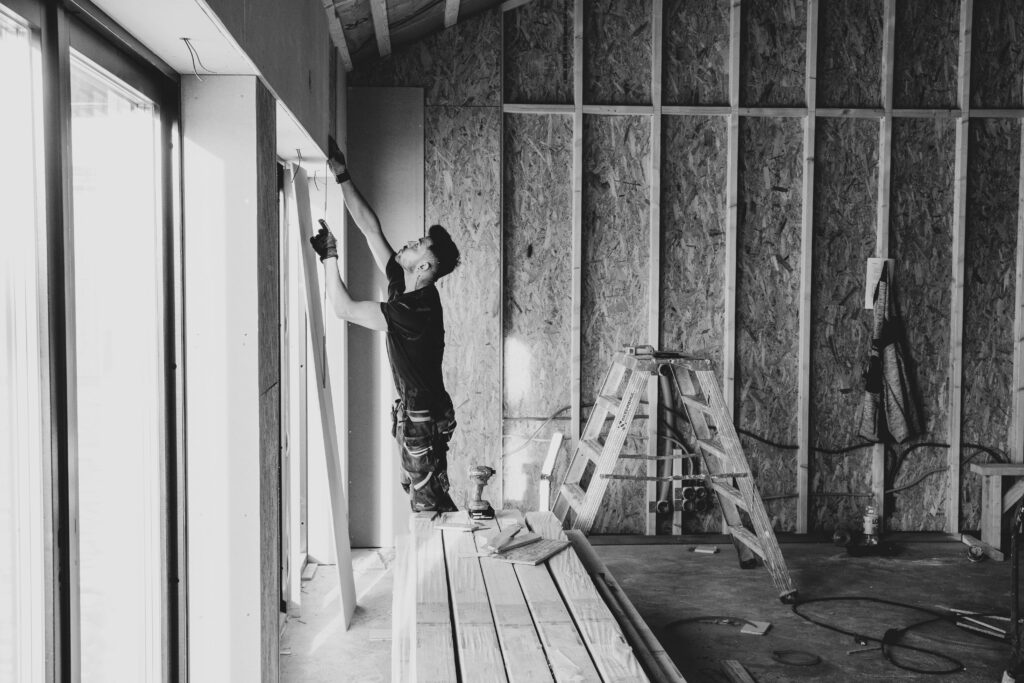Have you ever walked around your house, feeling like something is missing? Maybe you need more space for guests, a home office, or just a cozy reading nook. Adding a new room to your home can be the perfect solution to not only enhancing your living space but also increasing the value of your property. In this article, you will learn all about the process of adding a new room to your home, from planning and budgeting to construction and finishing touches. Discover how this renovation project can transform your living experience and provide you with the extra space you’ve always dreamed of. Get ready to unlock the full potential of your home with the addition of a new room!
Table of Contents
ToggleThe Significance of Adding a New Room: Context and Benefits
Adding a new room to your home can be a life-changing decision with a multitude of benefits that go beyond just extra space. Whether you are looking to increase the value of your property, create a dedicated work or leisure area, or accommodate a growing family, the process of adding a new room is a significant undertaking that requires careful planning and consideration.
According to a recent survey by the National Association of Realtors, adding a new room to a home can increase its market value by up to 20%, making it a worthwhile investment for homeowners looking to boost their property’s resale potential. In addition to the financial benefits, an extra room can also enhance the quality of life for you and your family, providing a versatile space that can be customized to suit your specific needs and lifestyle.
To illustrate the impact of adding a new room, consider the success story of the Garcia family who decided to add a home office to their property. With more people working remotely, they saw the opportunity to create a dedicated workspace that would not only increase their productivity but also improve their work-life balance. By investing in this renovation project, the Garcia family not only saw an increase in the value of their home but also experienced a significant improvement in their daily lives.
In conclusion, adding a new room to your home is a decision that can have far-reaching benefits, both in terms of financial value and personal well-being. By understanding the significance of this undertaking and planning accordingly, you can transform your living space into a functional and rewarding environment that meets your current and future needs.
How to add a new room step by step
Adding a new room to your home can be a rewarding project that not only increases the value of your property but also enhances your living space. In this guide, we will walk you through the process of adding a new room step by step. Whether you are planning to build a new bedroom, a home office, or a playroom, these guidelines will help you achieve your renovation goals effectively.
1. Plan and Design
– Assess your current space: Evaluate your existing floor plan to determine where the new room will be added and how it will flow with the rest of the house.
– Set a budget: Determine how much you are willing to invest in the project and allocate funds for different aspects such as materials, labor, and permits.
– Design the new room: Work with an architect or designer to create a blueprint for the new room, including dimensions, layout, and any specific features you want to include.
2. Obtain Permits
– Research local regulations: Check with your local building department to understand the zoning laws, building codes, and permit requirements for adding a new room to your home.
– Submit permit applications: Fill out the necessary permit applications and provide detailed information about the project, including plans, materials, and timelines.
– Wait for approval: Once you have submitted your permit applications, wait for them to be reviewed and approved before starting any construction work.
3. Hire Contractors
– Find reputable contractors: Do thorough research to find experienced and reliable contractors for the different aspects of the project, such as framing, electrical, plumbing, and finishing work.
– Get multiple quotes: Obtain quotes from multiple contractors to compare prices, timelines, and services offered before making a decision.
– Sign a contract: Once you have selected a contractor, make sure to sign a detailed contract that outlines the scope of work, timeline, payment schedule, and warranties.
4. Construction
– Demolition and preparation: Start by demolishing any existing structures in the area where the new room will be added and preparing the site for construction.
– Framing and structural work: Build the new walls, floors, and roof structure according to the approved plans, ensuring that everything is up to code and meets safety standards.
– Electrical and plumbing: Install electrical wiring, outlets, switches, lighting fixtures, and plumbing connections as needed for the new room.
– Insulation and drywall: Add insulation to the walls and ceiling for energy efficiency and soundproofing, then install drywall to create a finished surface.
– Flooring and finishing touches: Choose and install flooring materials, paint the walls, trim the windows and doors, and add any additional features to complete the new room.
5. Inspection and Final Touches
– Schedule inspections: Contact the building department to schedule inspections at various stages of the construction process to ensure compliance with building codes.
– Final walkthrough: Once the construction is complete, do a final walkthrough with your contractor to identify any remaining issues or unfinished details that need to be addressed.
– Enjoy your new room: Once all inspections are passed and final touches are completed, you can now enjoy your newly added room and make it your own.
By following these steps and being diligent in your planning and execution, you can successfully add a new room to your home and create a space that meets your needs and enhances your living environment.

Tips for Adding a New Room:
✅ Plan ahead: Before starting any construction, make sure to have a clear plan in place that includes the layout, design, and budget for the new room.
❌ Skip the permits: Avoid the temptation to skip the necessary permits and permissions required for adding a new room. This can lead to legal issues and complications down the road.
💡 Hire professionals: Consider hiring an architect or interior designer to help with the planning and design of the new room. They can ensure that the space is functional and aesthetically pleasing.
✅ Set a realistic timeline: Establish a realistic timeline for the construction of the new room, taking into account factors such as permits, material availability, and contractor schedules.
❌ Cut corners on quality: Do not compromise on the quality of materials and workmanship when adding a new room. Invest in durable materials and skilled labor to ensure a long-lasting and well-built space.
💡 Consider additional amenities: Think about incorporating additional amenities in the new room, such as built-in storage, a reading nook, or a small office space, to maximize its usefulness.
✅ Budget carefully: Create a detailed budget for the new room project, accounting for all expenses including materials, labor, permits, and any unforeseen costs that may arise.
❌ Forget about natural light: Avoid neglecting the importance of natural light in the new room. Incorporate windows or skylights to bring in natural light and make the space feel more spacious and inviting.
Key Concepts
In the exciting realm of home renovation and expansion, the concept of “adding a new room” is a pivotal decision that can transform a living space into something extraordinary. To embark on this journey, it is essential to grasp some key concepts that will guide you through the process.
1. Architectural Design:
At the core of adding a new room lies the crucial aspect of architectural design. This involves envisioning the layout, dimensions, and structural elements of the new space. Architects play a vital role in translating your ideas into tangible plans, ensuring that the new room aligns with the existing structure seamlessly.
2. Structural Integrity:
Before adding a new room, it is imperative to assess the structural integrity of your current property. Factors such as load-bearing walls, foundation strength, and potential impact on the overall stability of the building must be carefully evaluated to avoid any complications in the future.
3. Permits and Regulations:
Building codes and regulations vary from location to location. Obtaining the necessary permits for adding a new room is non-negotiable. Compliance with local regulations ensures that the construction is safe, legal, and up to standard.
4. Budgeting and Cost Estimation:
Adding a new room involves financial considerations that should not be overlooked. Developing a detailed budget that accounts for materials, labor, permits, and unforeseen expenses is essential. Cost estimation helps you plan effectively and prevents budget overruns.
5. Functionality and Purpose:
Every new room should serve a specific purpose and enhance the functionality of your home. Whether it’s a cozy home office, a spacious master bedroom, or a vibrant playroom for children, defining the purpose of the new room is crucial in its design and layout.
6. Natural Light and Ventilation:
A well-designed room integrates natural light and ventilation seamlessly. Consider the orientation of the new room, window placement, and airflow to create a bright, airy, and comfortable space. Natural elements can significantly impact the ambiance and energy efficiency of the room.
7. Aesthetics and Style:
The aesthetics of the new room should harmonize with the existing architecture and reflect your personal style. From color palettes and materials to finishes and textures, each element contributes to the overall visual appeal of the space. Cohesive design ensures a unified and inviting atmosphere.
8. Future Resale Value:
While adding a new room caters to your current needs and preferences, it is essential to consider its impact on the future resale value of your property. Thoughtful design choices, quality construction, and functionality can enhance the market value of your home, making it a wise investment in the long run.
By delving into these key concepts surrounding the addition of a new room, you pave the way for a successful and transformative home improvement project. Each aspect contributes to the holistic approach of enhancing your living space, creating a haven that encapsulates both practicality and comfort.
FAQs: Adding a New Room
❓ How much does it cost to add a new room to a house?
The cost of adding a new room to a house can vary widely depending on factors such as the size of the room, materials used, location, and whether any existing structures need to be modified. On average, homeowners can expect to spend between $20,000 and $50,000 for a basic room addition.
❓ Do I need a permit to add a new room to my house?
In most cases, yes, you will need a permit to add a new room to your house. Building codes and regulations vary by location, so it is important to check with your local government or a qualified contractor to determine the specific requirements for your area.
❓ How long does it take to add a new room to a house?
The timeline for adding a new room to a house can vary depending on the size of the room, the complexity of the project, and other factors. On average, the construction process can take anywhere from a few weeks to a few months.
❓ What are some common challenges associated with adding a new room to a house?
Some common challenges when adding a new room to a house include staying within budget, obtaining necessary permits, dealing with unexpected structural issues, and coordinating with contractors and suppliers. Proper planning and working with experienced professionals can help mitigate these challenges.
❓ Can I add a new room to my house myself, or should I hire a professional?
While some homeowners may have the skills and experience to tackle a room addition project themselves, it is often recommended to hire a professional contractor. Professional contractors have the expertise, tools, and resources to ensure the project is completed efficiently, safely, and up to code.



2 Responses